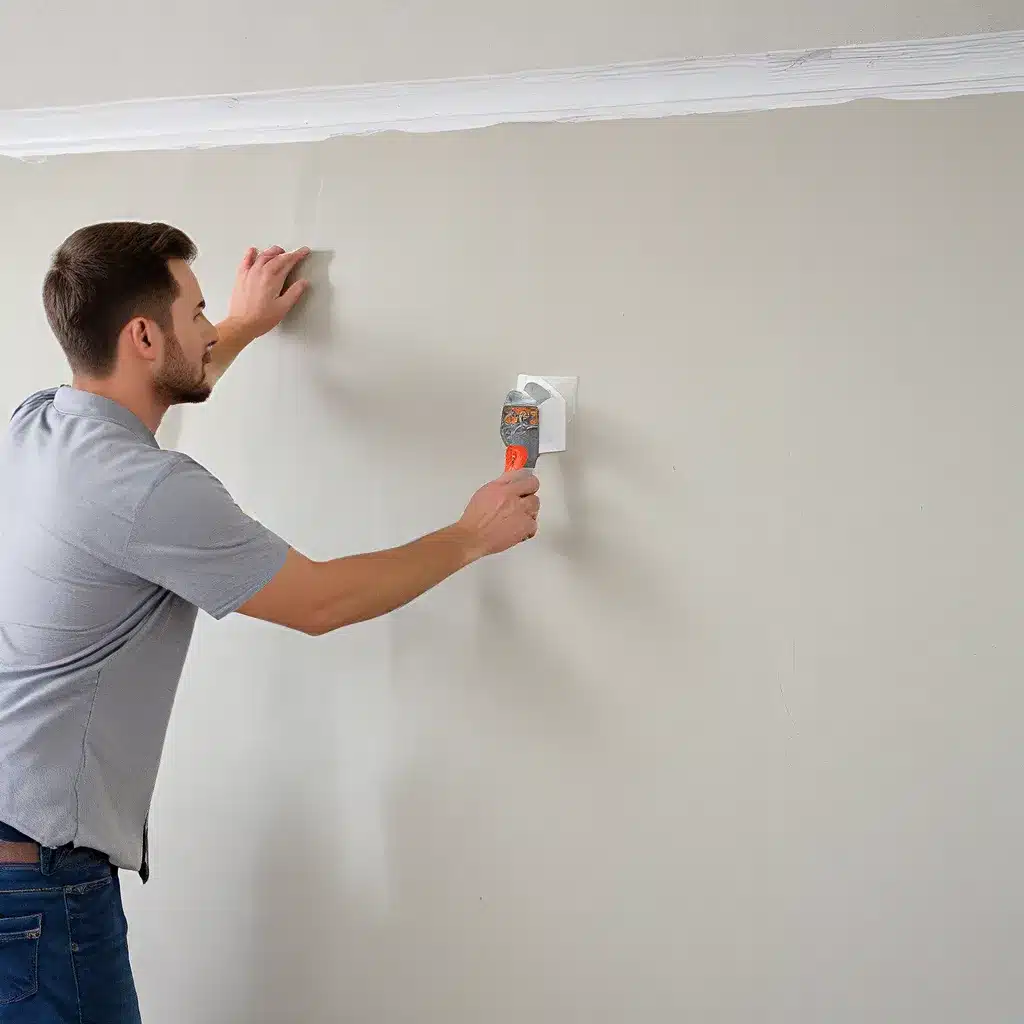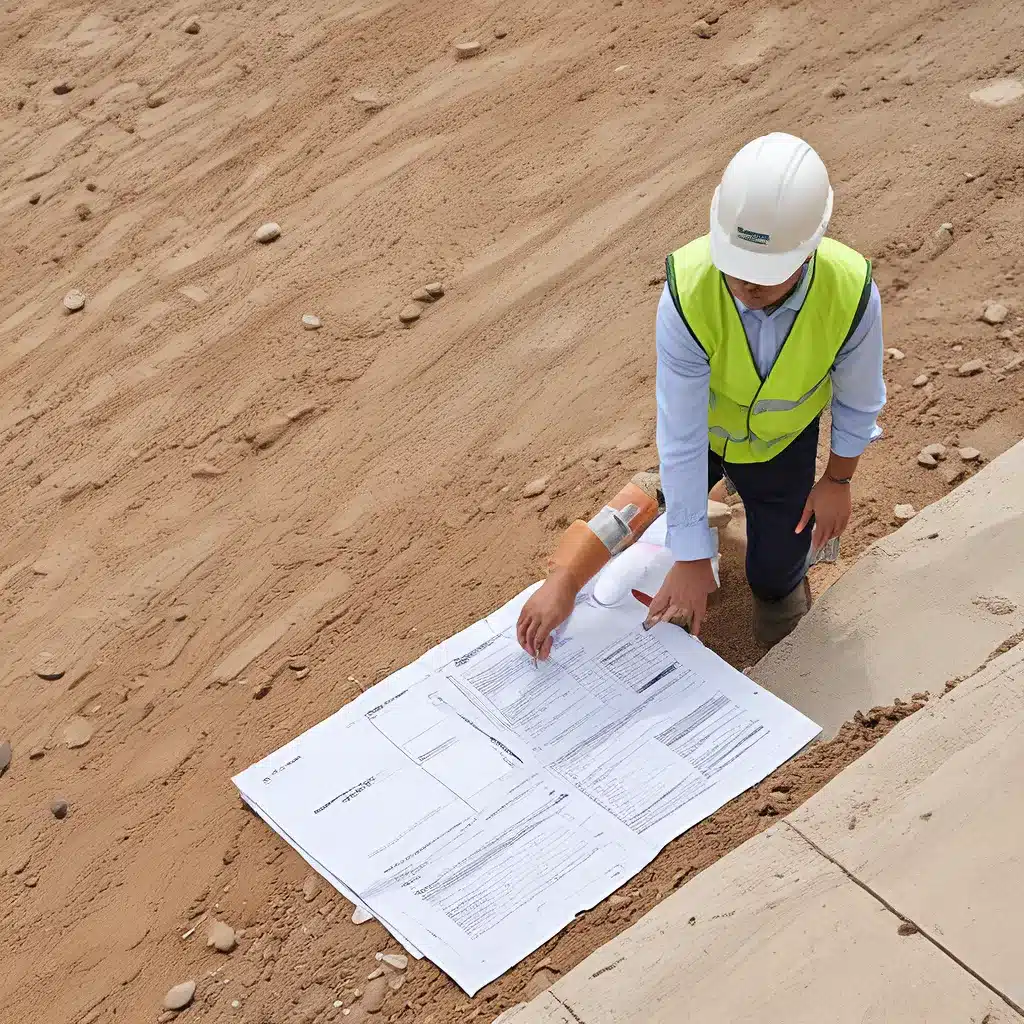
Confessions of a Serial DIYer
I’ll admit it – I’m a total DIY junkie. There’s just something so rewarding about rolling up my sleeves, getting my hands dirty, and transforming a space with my own two hands. And when it comes to home renovations, drywall has always been one of my favorite mediums to work with.
Sure, it may not have the same flair as custom cabinetry or the instant gratification of a fresh coat of paint. But there’s an undeniable satisfaction in taking a bare wall and turning it into a perfectly smooth, polished surface. Like magic!
Of course, achieving that flawless drywall finish isn’t always as easy as it seems. I’ve had my fair share of mishaps over the years – uneven seams, unsightly bumps, and more spackle and sanding than I care to remember. But through trial and error, I’ve learned a thing or two about the art of drywall installation. And today, I’m excited to share my top DIY hacks for creating walls that are truly dynamite.
The Stud-Finder Dilemma
Let’s start with one of the most crucial (yet often frustrating) steps in any drywall project: finding the studs. As any seasoned DIYer knows, properly locating those wooden beams behind the walls is essential for securing your drywall panels and ensuring a sturdy, long-lasting finish.
But how exactly do you find those elusive studs? Well, the classic stud finder tool is certainly one option. But as I’ve discovered, these devices can be, well… finicky. Sometimes they pick up on electrical wiring or water pipes, leading you astray. And other times, they just seem to flat-out fail, leaving you stumped (no pun intended).
That’s why I’ve developed a foolproof, low-tech method for locating studs. And the best part? It only requires a couple of household items you probably already have on hand.
As the helpful folks over on Reddit suggest, all you need is a strong magnet and a thin nail. Simply run the magnet along the wall and look for where it sticks – that’s where you’ll find your stud. Then, use the nail to make a small pilot hole and confirm the location.
It may not be the fanciest technique, but I can attest that it works like a charm. And it’s saved me from countless frustrating stud-finding failures over the years. Plus, it’s a great party trick to bust out the next time your friends are struggling with their own drywall projects.
Cutting Corners (Literally)
Once you’ve got your studs located, it’s time to start cutting and hanging the drywall panels. And let me tell you, there’s an art to getting those corners just right.
Now, I know what you’re thinking – how hard can it be to cut a simple corner? Well, my friends, let me tell you, it’s easier said than done. Especially if you’re dealing with older walls that aren’t perfectly straight and square. One wrong move, and suddenly you’ve got unsightly gaps or ragged edges that just won’t blend in seamlessly.
That’s why I always rely on a trusty miter box to ensure clean, precise cuts every time. Just like Jenna Sue’s board and batten tutorial demonstrates, a miter box allows you to make perfect 45-degree angle cuts, no matter how crooked your walls may be.
And speaking of crooked walls, let’s not forget about those pesky seams where panels meet. I used to dread dealing with those – spackle, sand, repeat, ad nauseam. But then I discovered a simple trick that’s been game-changing for my drywall projects.
The secret? Tape. Yes, good old-fashioned drywall tape. By carefully applying it along the seams before mudding, you can create a smoother, more seamless transition that requires far less sanding and touchups. It’s a total lifesaver, especially in older homes with less-than-perfect wall conditions.
Spackle Savvy
And while we’re on the topic of spackle, let’s talk about another one of my favorite drywall hacks: the spackle sandwich.
Now, I know what you’re thinking – a spackle sandwich? What is this, some kind of construction-themed lunchbox creation? But trust me, this little trick is a total game-changer when it comes to achieving that smooth, flawless drywall finish.
The basic idea is simple: instead of just slapping on a single layer of spackle and calling it a day, you apply a thin first coat, let it dry, and then add a second layer on top. This “sandwich” method helps to fill in any remaining divots or imperfections, creating an ultra-smooth surface that requires minimal sanding.
And the best part? It’s not just for seams and nail holes. I use the spackle sandwich technique for any drywall irregularities, from dings and dents to those pesky little air bubbles that sometimes pop up. It may take a bit more time and effort upfront, but trust me, the payoff is so worth it.
Painting with Precision
Of course, no drywall project is complete without the final step: painting. And as any seasoned DIYer knows, getting that perfect, professional-looking finish can be a real challenge.
But I’ve got a few tricks up my sleeve that have made painting drywall a breeze. For starters, I always make sure to choose a high-quality, low-sheen paint – something like a satin or eggshell finish. These types of paints tend to be more forgiving when it comes to hiding any lingering imperfections or uneven textures.
And speaking of textures, taking a cue from Jenna Sue’s board and batten tutorial, I always make sure to use the right type of roller for the job. Foam rollers may be great for getting into tight corners, but they can often leave those pesky roller marks. Instead, I opt for a woven or velour roller designed specifically for smooth surfaces.
But perhaps my biggest painting hack? Cutting in with a brush first. By carefully outlining all the edges and corners with a high-quality angled brush, I’m able to get a super clean, professional-looking finish – no messy drips or bleed-throughs in sight.
It may take a bit more time and effort upfront, but trust me, it’s worth it. After all, what’s the point of putting in all that hard work on the drywall if your final paint job doesn’t look its absolute best?
The Drywall Difference
And there you have it, my friends – the ultimate DIY hacks for creating flawless, dynamite drywall installations. From locating those tricky studs to achieving a silky-smooth finish, I’ve learned a thing or two over the years. And I’m excited to share these tips and tricks with you, the fellow DIY enthusiasts out there.
Because at the end of the day, drywall may not be the sexiest home renovation material. But when done right, it can truly make all the difference in transforming a space. And with a little bit of elbow grease and some creative problem-solving, you can take your drywall projects from “meh” to magnificent.
So, what are you waiting for? Grab your tools, crank up the tunes, and get ready to unleash your inner drywall maestro. Who knows – you might just surprise yourself with how dynamite your walls can be.
And if you’re ever in need of a little extra inspiration or support, don’t forget to check out the amazing resources available at Reading General Contractor. They’ve got all the tips, tricks, and know-how you need to make your drywall dreams a reality.
Happy DIYing, my friends!
Related posts:
No related posts.




